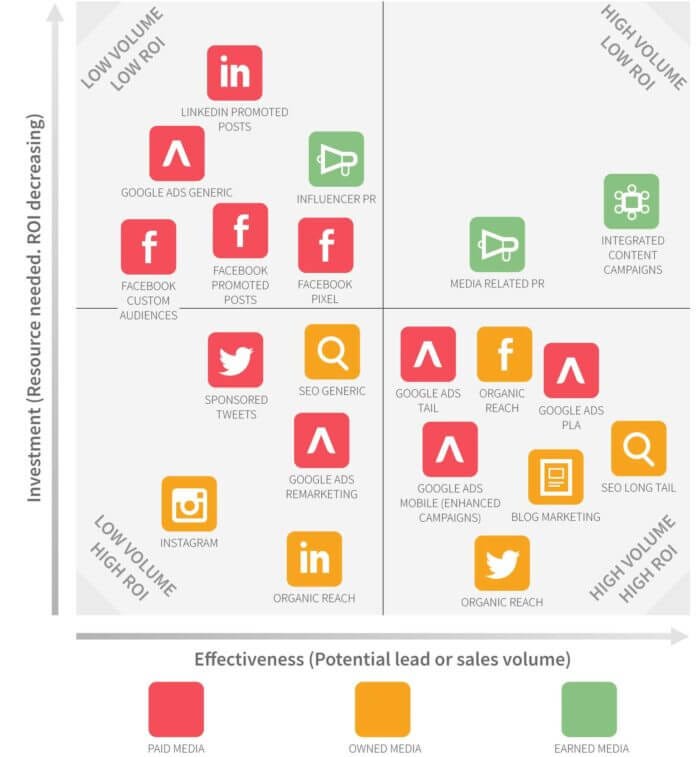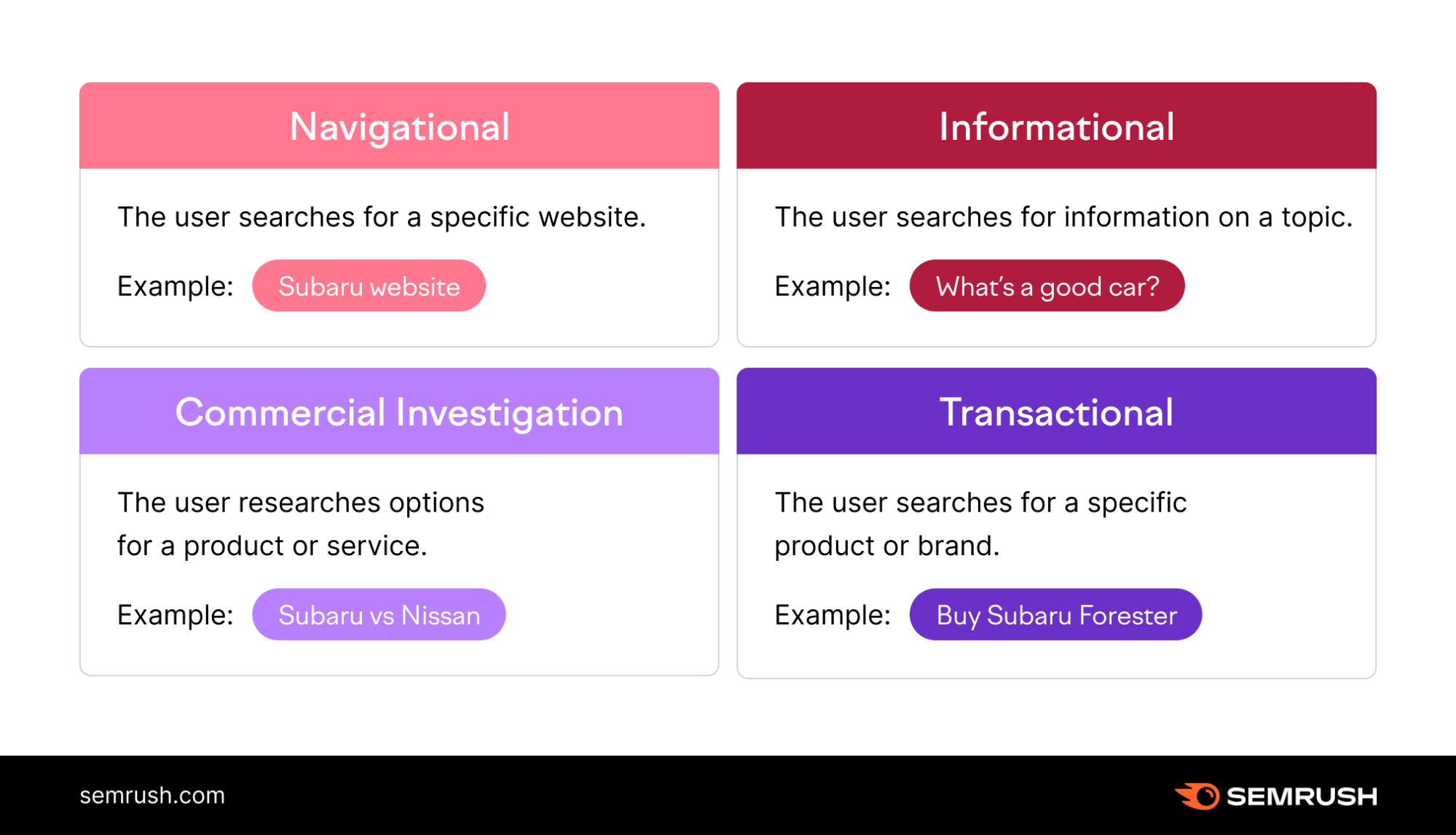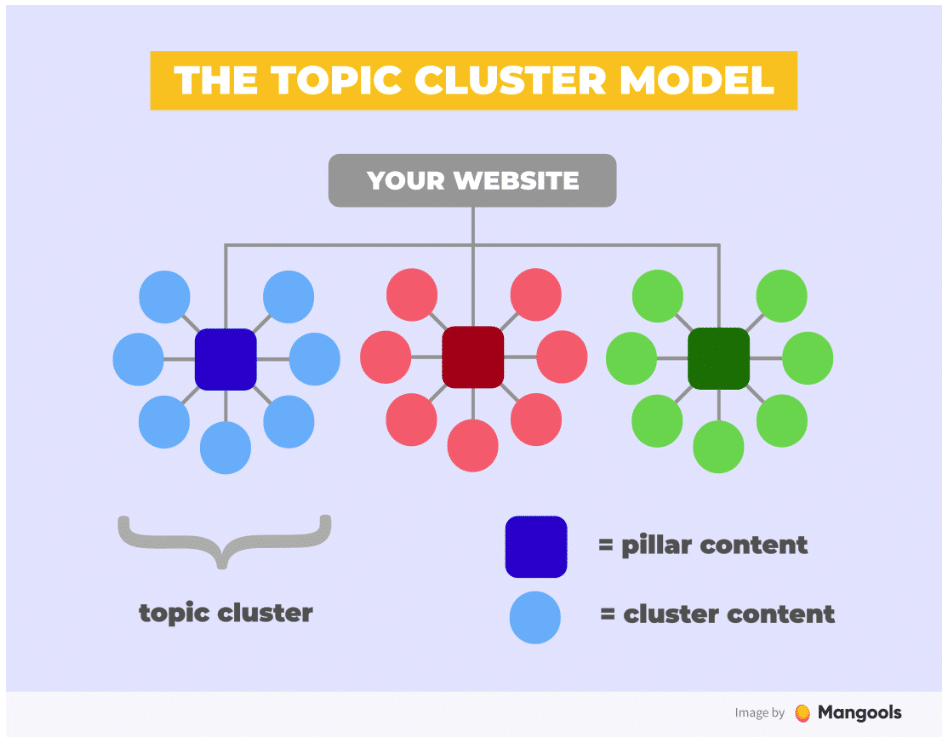What is the best SEO strategy for Startups? 🤔

For my money, the answer is Topic-Based SEO.
I know you probably expected to have to scroll past 6000 words to get to that answer. But that's not how I roll. If you are just here for the answer to our question of the day, there it is.
But if you'd like to know why I chose topic-based SEO, or you are about to click over to Google and search for it, give me a minute.
First, a few definitions...
1. What is topic-based SEO?
Topic-based SEO is the process of creating, optimizing, and grouping related content to improve topic coverage for both users and search engines.
2. What are topic clusters?
A topic cluster is a group of related topics on a website that includes pillar content, closely linked articles, and internal and external linking. Topic-based SEO strategy involves optimizing website content around topic clusters.
3. What is pillar content?
Pillar content is substantive and informative content covering a specific topic or theme that can be broken into many derivative sections, pieces, and materials. Examples of pillar content include eBooks, reports, and long-form webpages.
4. What is a topic hierarchy?
A topic hierarchy is a group of pages all deemed to be about the same topic, optimizing these pages around the same keywords and arranging them within a sitemap in order to capture searchers in the most strategic way possible.
Why does your startup need an SEO strategy?

Paid, Owned & Earned
To answer this question, let's start with three types of media: paid, owned and earned.
Earned media can deliver big-time awareness fast. But before you’ve built a following or even told your product story, you can’t earn coverage from any reputable media outlet without paying.
Most startups struggle to find the budget for Paid media. But even if you did, with no search authority built up and no dedicated niche, Paid media becomes a costly proposition that most founders simply can’t afford when first building their marketing strategy.
Because of this, startup marketing begins with the highest volume and highest ROI channel--content. And more specifically SEO.
What should your startup SEO strategy focus on?
There are a lot of excellent SEO strategies. And as your business scales, you may need to explore things like link building, schema markup, technical SEO and more. But for most early-stage companies, marketing strategies need to be laser-focused on returning value for modest marketing investments.
With this in mind, the goal of a good SEO strategy in the early stages of your business is NOT to monetize the ROI of owned media by making it more visible to search engines (though that is definitely important).
The goal of a good startup SEO strategy is to create and test the stories that are going to sell your products now and into the future, regardless of what channel you choose.
Remember: Campaigns yield direct results. Strategies yield data. And data helps you level up.
If you want to focus on rankings and clicks and ROI, you want a campaign. But focusing on a campaign in the earliest days of your business is a mistake. You will, at best, marginally improve your share of voice and capture some good rankings. But without a strategy and a budget to scale content, you won’t be able to keep up the momentum.
What you need is an SEO strategy designed to give you actionable data. If you do it right, you'll leave this exercise more confident in two things:
1. The topics, features and messages that resonate with your target audience.
2. The ways you can continuously re-evaluate and pivot if necessary.
So without further ado, I introduce to you the best SEO strategy for Startups: Topic-Based SEO.
Why Topic-Based SEO?

A brave new world
Put simply, search engines work differently today than they used to even just a few years ago.
For the bulk of its existence, Google (and other search engines) focused on finding the best match for the exact words typed into the search bar.
But as the world became more dependent on search, mobile devices were introduced and search was added to things like home assistants, TVs and cars, Google had to adapt to delivering results that would suit the person searching, not the search itself.
This new world makes building a campaign around a single keyword or even a set of keywords virtually impossible. There are millions of keywords for different applications inside every topic area you can imagine.
Many marketers attempted to get around this by targeting question searches, building utility content and reference guides designed to answer burning questions. But with Google scraping informational content and pulling out relevant details for searches into the SERPs, this strategy now produces limited results.
So how can businesses--let alone startups--compete?
The importance of search intent
One of the ways search engines attempt to personalize search is to gauge search intent--an estimate of the type of answer the searcher is likely looking for.
Does your search correlate with someone shopping for sneakers? Shopping listings will appear. Do you instead seem like you are researching a paper for a class? Informational and reference results will float to the top.
Your site content needs to send clear signals to search engines that you are an authority on the topic. But because Google parses informational content in a way that may mean you don't get a direct click from delivering relevant information, it becomes important that you deliver relevant content for every type of search within a topic area.
That means, if a searcher wants basic info, your site pops up. But when that person inevitably returns to comparison shop or make a final purchase, your content pops up for those keywords as well. That means you have to not only have multiple content types but optimize your content to suggest to Google which content is best for which keyword.
The more topic authority you create, the more of these suggestions search engines will take, meaning more of your content will rank, driving customers to the right place on your site for the right stage in their buyer journey. This will, in turn, create a higher click-through rate driving stickier traffic with longer dwell times--all ranking factors for Google and other search engines.
Personalized, friction-free experience
According to a recent McKinsey study, personalization like this has never been more important to consumers.
- Seventy-one percent of consumers expect companies to deliver personalized interactions. And seventy-six percent get frustrated when this doesn’t happen.
- Personalization drives performance and better customer outcomes. Companies that grow faster drive 40 percent more of their revenue from personalization than their slower-growing counterparts.
Companies delivering a friction-free experience from search to purchase that delivers content for exactly the problem their consumer is experiencing not only drives conversion, but positive brand identification as well.
If your pages are not categorized properly, a refresh of your topic clusters can open these pages up to the correct audience.
How to get started
Gathering intent data
Like most SEO projects, this one begins with keyword research. The goal should be to select topic areas, sort new and existing keywords into these topic areas and identify the intent of your keywords. Be careful to select informational keywords to pair with informational content and commercial / transactional keywords to pair with that content.

From a recent content & SEO strategy engagement. Topic / keyword groups are identified and paired with the most prevalent intent for keywords.
You can start by simply searching your top keywords and paying close attention to the types of content that ranks highest. Do you notice patterns you can emulate? Does your list contain a variety of search intents?
You should also perform a content gap analysis with a focus on search intent. Does your site do a great job of delivering high-converting commercial and transactional pages that get results, but lack depth when it comes to informational content like blogs and guides? You may be sacrificing much-needed search volume from people looking to answer a few questions before they make a purchase.
Creating topic hierarchies
Creating great content for all search intents is only half the battle here. You also need to ensure that you are telling a story to search engines that ensures they serve the right content to the right user.
This is where a good sitemap and URL structure make the difference. If you want to be seen as an authority on the topics you care about, organizing your sitemap strategically great place to start.
Here's a brief overview to get you started:
1. Broad, informational content lives at the bottom of your sitemap. Designed to answer questions, illuminate core concepts and get people excited about products like yours, this content answers question searches, definition searches and searches for specific features. This content typically comes in the form of blogs, video libraries and ebooks. Some of the highest volume terms in your industry are likely broad, informational terms.
2. Above that, you have commercial content--topic pages designed to connect the informational topics with your products and services. The goal of these pages is data--you want to take a broad group of consumers and give them opportunities to self-select their next step. This selection process will provide good data about what interests your customers at this critical stage of the buying journey.
3. And finally, you have your transactional pages. These are typically product pages and landing pages designed to capture searches from in-market consumers who are indicating through their search terms that they may be ready to buy. This content needs to offer critical information and a place to convert.
Your website navigation, sitemap and URL structure should reflect these hierarchies. Blog / pillar / support content should link upwards to top-level Services pages, where users decide which particular part of their chosen service interests them. They then move to a page to convert. If their search term's intent shows them more ready to buy, they should be delivered more directly to the part in the hierarchy that matches their intent.
Time to optimize!
Once you've chosen your topics and organized your website , you must alert your search engine which content is best suited to which keyword (and its intent) within your topic area. This process--the actual Optimization in Search Engine Optimization--is how you suggest to search engines your intent for the content you've produced. Remember, they're looking to you to tell them.
You do this by linking related content together through hyperlinks, and by optimizing your pages for different keyword variants in each topic area. If you've done it right, you will have a broad range of keywords with different intents for each topic area and pages at every level to address them. If you can organize your sitemap to reflect these topic areas, you'll send a strong signal to search engines that you are an authority on these topics--no matter where searchers are searching from.
Last but not least...
If the above seems complicated, feel free to reach out for a free consultation.
To wrap things up, let's take a look back at what we've learned:
-
-
- Examine all existing pages and try to glean their topics, keywords, CTR, etc, depending on how much historic data you have.
- Once you’ve chosen some topics that are most prominent across the site, it is time to do keyword research to determine the keywords available within those topics and their search intent. Try to get a range of informational & commercial; high-volume and lower volume; short and pithy or long-tail.
- Assign a keyword to each page and build a new sitemap that takes into mind your keyword hierarchy. Look at your URL structure and try to keep your less essential keywords to the lower tier pages.
- Make sure you link each page to at least one other page in its topic cluster.
-
The best part about this strategy is even if you don't see top rankings right away, you'll set your site up to collect excellent customer data. Track each topic's keyword list to see which topics customers are resonating with, and which search intents perform best. This can help you refine your messaging, learning more and more with each new visitor.

![Is The Semrush Search Intent Filter Accurate? [Data-Backed Analysis] | Nectafy](https://www.nectafy.com/hs-fs/hubfs/Images/Blog/is-the-semrush-search-intent-filter-accurate-data-backed-analysis-nectafy.jpg?width=463&height=285&name=is-the-semrush-search-intent-filter-accurate-data-backed-analysis-nectafy.jpg)
